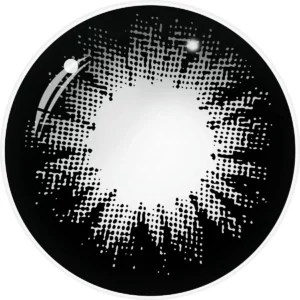Gray colored contact lenses differ from regular (clear or transparent) contact lenses primarily in their appearance and the intended cosmetic effect.
Here are some key differences:
- Color Enhancement:
- The most obvious difference is the color. Gray colored contact lenses are specifically designed to alter the color of the eyes, giving them a gray hue. Regular contact lenses are transparent and do not change the natural color of the eyes.
- Cosmetic Purpose:
- Gray colored contact lenses are considered cosmetic or theatrical lenses. They are worn primarily for aesthetic purposes to enhance or change the eye color for fashion, costume, or personal preference. Regular contact lenses, on the other hand, are typically worn to correct vision and provide clarity.
- Design and Patterns:
- Colored contact lenses, including gray ones, may have specific designs and patterns to mimic the natural appearance of the iris. gray colored contact lenses This design helps create a more realistic and natural look. Regular contact lenses are designed to be transparent, allowing light to pass through without altering the eye color.
- Opacity:
- Gray colored contact lenses are opaque and completely cover the natural eye color, providing a noticeable change. In contrast, regular contact lenses are transparent to allow light to focus on the retina, improving vision without affecting the eye color.
- Available Prescriptions:
- Both gray colored contact lenses and regular contact lenses can be available with or without prescription powers. If you have a vision correction need, you can often find colored lenses that also correct your refractive error.
- Usage and Replacement Schedule:
- Colored contact lenses, including gray ones, may have different recommended replacement schedules (daily, bi-weekly, monthly) depending on the type and brand. It’s essential to follow the manufacturer’s guidelines. Regular contact lenses for vision correction also come in various replacement schedules based on the lens material and design.
- Comfort and Material:
- The comfort and material of gray colored contact lenses are similar to regular contact lenses. Advances in contact lens technology have made both types comfortable for many wearers, but individual experiences may vary.
It’s important to note that whether you choose gray colored contact lenses or regular contact lenses, a prescription from an eye care professional is required for proper fitting and safe use. Additionally, colored contact lenses, especially those obtained without a prescription, should be purchased from reputable sources to ensure quality and safety. Always follow the recommended wearing schedule and care instructions provided by the manufacturer and your eye care professional.

